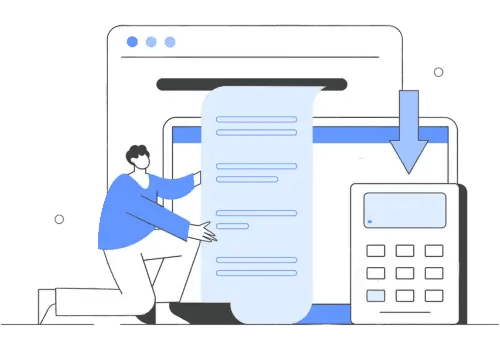Home > Case Studies > Contract Management
Case Study: How Custom Billing Simplified Complex Invoicing Process

Spotlight
An IT company operating in the tech services sector had grown rapidly over the past three years. With clients across industries and projects ranging from one-time services to long-term retainers, their billing needs became increasingly varied. They realized that the generic billing systems they had tried before were not meeting their specific needs.
Highlights
Less Time Spent on Billing
Fewer Invoice-Related Errors
Faster Client Payments
Customer’s Speak

Mike Reynolds
Legal Operations Manager
“
Managing contracts manually led to missed deadlines, compliance risks, and inefficiencies. With SharePoint Contract Management, automation streamlined workflows, reduced manual effort, and ensured compliance. Now, we focus more on clients instead of paperwork.
Challenges Faced Before Implementing Revenue 365
Before leveraging custom billing, the team faced several ongoing billing and invoicing hurdles that affected efficiency, accuracy, and timely collections.
- Handling diverse invoice formats
The business served a wide range of clients, each with unique invoicing preferences. Some required detailed breakdowns of services, while others preferred high-level summaries. Managing and switching between multiple formats manually led to inconsistencies and increased the risk of errors. - Time-consuming manual adjustments
Changes in payment terms or project scope during billing cycles were common. These updates required the team to manually revise existing invoices, recalculate totals, and verify accuracy adding to their workload and increasing the chance of oversight. - Inefficient payment tracking and follow-ups
Without a centralized system to monitor payment statuses, it was difficult to identify which invoices were outstanding, partially settled, or overdue. This made the follow-up process disorganized and occasionally resulted in missed or delayed collections. - Repetitive recurring billing processes
Despite having clients on fixed monthly retainers, recurring invoices had to be manually generated each cycle. Important updates such as revised billing addresses or adjusted service amounts were often overlooked due to the repetitive nature of the task. - Inconsistent application of discounts and taxes
Applying region-specific tax rates and client-specific discounts required manual intervention. This lack of automation led to inconsistent invoice totals and additional verification steps, affecting both internal accuracy and client trust.
How We Solved It – The Solution
When the business moved to a custom billing setup tailored to their specific workflows, things gradually began to fall into place.
- Multiple Billing became Manageable
The finance team could now select or automatically assign billing formats depending on the client type. Whether it was a service summary, a milestone-based breakdown, or itemized charges, everything was already set up. They no longer had to recreate layouts from scratch or worry about forgetting key details. - Mid-Cycle Changes
With flexible fields and editable modules, making updates during an active billing period did not feel like starting over. The system allowed quick recalculations, applied adjustments correctly, and automatically updated the total. Mistakes reduced, and the finance team saved hours every week. Payment Tracking Became Crystal Clear
A dashboard displaying all invoice statuses helped the team identify unpaid or partially paid bills briefly. Filters and alerts made it easy to follow up at the right time. It also improved communication with clients since they could now refer to accurate payment histories whenever needed.Recurring Invoices Handling
The custom billing approach help generat monthly invoices on schedule, and any changes in subscription amount or customer details were reflected automatically. This helped the team stay focused on more important tasks, rather than repeating the same steps each month.Accurate Discounts and Tax Handling
With custom billing in place, discounts and taxes were applied based on predefined rules tailored to each client. This ensured promotional offers, loyalty-based pricing, and regional tax rates were calculated automatically. Every invoice reflected the correct values, minimizing errors and strengthening client confidence in the billing process.
Results & Business Impact
Moving to a custom billing approach created visible improvements within the first few months. The finance team regained time, errors were reduced, and the overall invoicing process became easier to manage.
1. 60% Less Time Spent on Billing Tasks
What once consumed nearly half of the finance team’s work now takes just a few focused hours. By automating repetitive steps and reducing manual input, the team gained back valuable time to concentrate on strategic planning, client insights, and higher-impact financial tasks.
2. 90% Reduction in Invoice Related Errors
Automated calculations and standardized templates led to a dramatic drop in billing mistakes. This improvement boosted client satisfaction, reduced back-and-forth corrections, and strengthened the credibility of the finance team with both internal stakeholders and external clients.
3. 50% Faster Payments from Clients
With clearer invoices, accurate breakdowns, and timely automated reminders, clients responded faster and paid sooner. The business saw more predictable cash flow and fewer payment delays, helping build healthier financial relationships with clients.
Industry
IT
Location
United Kingdom
%201%20(2)_BYY2CYLVD2.png)
Automating Contract Management Boost Compliance & Efficiency
Read more
%201%20(2)_BYY2CYLVD2.png)
Automating Contract Management Boost Compliance & Efficiency
Read more
%201%20(2)_BYY2CYLVD2.png)
Automating Contract Management Boost Compliance & Efficiency
Read more
%201%20(2)_BYY2CYLVD2.png)
Automating Contract Management Boost Compliance & Efficiency
Read more
























